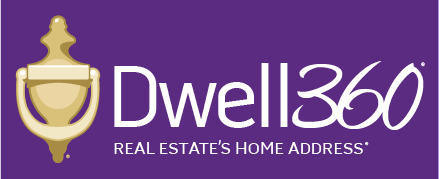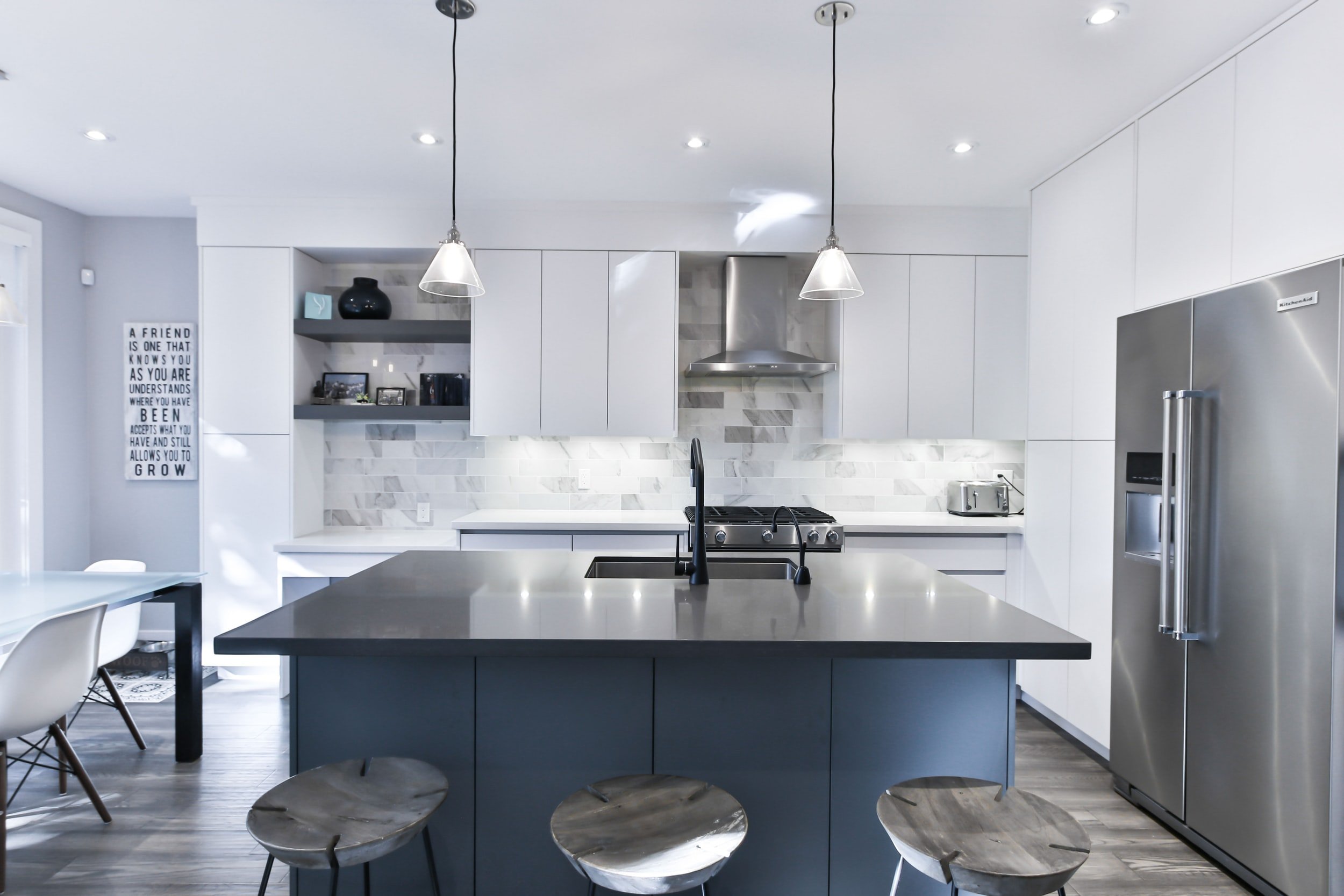Smart Homes Part 5: Thermostats, Lighting, and Appliances
Smart homes today have expanded to include even more devices to improve functionality and efficiency in the home. Thermostats, lights, and appliances are now three categories of products that can be included in your smart home. In this final blog of our Smart Homes Series, we will examine a couple of manufacturers for each type of product and give you some basic information to get you started.
Smart Thermostats
Smart thermostats are a great way to save on heating and cooling over time, and many are much easier to use than you might think. Here we’ll talk about the Nest thermostat, and the two thermostats that Nest offers. (Note: Nest is now under Google, so it can be easily added along with other Google products! It is also compatible with Alexa.)
Nest offers the Nest Thermostat and the Nest Learning Thermostat, the latter being the more expensive option. Although similar, there are a few key differences between these two devices. We lay some of them out below.
One key difference we should note right off the bat is that the Nest Learning Thermostat is a bit more complex than the Nest Thermostat. As its name suggests, it is a learning thermostat, meaning that it learns about your temperature preferences, and can program itself to create a schedule that aligns with them (a feature called “Auto Schedule”). In fact, after just one week of using the Nest Learning Thermostat like a normal thermostat, it can begin to program itself to fit your temperature needs! The basic Nest Thermostat does not have this feature.
Another important difference is that the Nest Learning Thermostat has to be set up in the Nest App, while the Nest Thermostat is set up in the Google Home app. Despite this difference, both thermostats are controlled in the Google Home app. This leads us into a similarity between the two: they can be controlled from anywhere, with Wi-Fi, in the Google Home app. This is one of the big draws of smart thermostats, because it’s one of the features that helps you save on heating and cooling.
A final difference between the two is their ability to connect with the Nest Temperature Sensor, which is sold separately. The Nest Learning Thermostat (the 3rd, most recent generation) is compatible with the Temperature Sensor, while the Nest Thermostat is not. Temperature sensors are placed in different rooms, and tell your thermostat the temperature the room should be set to. They can even prioritize certain rooms over others, so your home temperatures are exactly how you’d like them. Learn more about the sensor here.
To continue on the idea of saving money, another feature of both thermostats is their ability to turn down the temperature in your home when you’re not there. (A feature called “Auto Away”) You can program this temperature, or Nest can decide for you and turn itself down accordingly. With this feature, you never have to worry about racking up your heating bill when you’re not home.
The Nest Leaf is another interesting feature of both thermostats. When the leaf pops up on your thermostat, it means that your home (or room that you’re in) is at a temperature that is saving energy. An additional feature of the Nest Learning Thermostat is that it gets trickier and trickier to get the leaf as you use it (based on your schedule, temperature preferences, and heating and cooling efficiency), encouraging you to continue to save energy!
Another similarity is that the thermostats both connect to your existing HVAC system, and they can monitor that system and send you alerts. Furthermore, both thermostats are compatible with most 24V heating and cooling systems (Nest Thermostat is compatible with 85%, while the Learning is compatible with 95%, check compatibility here.)
One last similarity is that both types of Nests can be controlled by your voice! Whether you have a Google Home or an Amazon Echo, both voice assistants allow you to control your Nests.
Lighting
Smart lights. Most of us have probably heard of them. But, how do they work? How can Alexa or Google Assistant control the lights in your home? What companies sell smart lights, and which lights are actually compatible with Alexa and Google Assistant? If you’re asking any of these questions, we’ve got you covered. This section will be less about specific products, and more about how these lights work, and some basics for how you can use your Amazon Echo or Google Nest to control them.
How Smart Lights Work: First Steps
Smart lights are often the first purchase people make when starting to create their smart home. Obviously, the first thing to do is purchase smart lights. But which ones? To answer this, you’ll have to think about smart devices you may already have, what companies and brands you’re using, and how your existing devices are connected (more on that in the next section). Your bulbs must be compatible with your existing smart home in order to execute all of their incredible abilities! Below we outline some popular brands, and some hubs and voice assistants that they’re compatible with.
The following are compatible with Google Assistant, Amazon Alexa, Samsung SmartThings, and Apple HomeKit. Be sure to check each of them out, as they all vary in price, features, abilities, and compatibility with other devices.
TP-Link Kasa Smart Light Bulb (NOT compatible with Apple HomeKit)
How Smart Lights Work: Connecting
The wonderful feature of smart bulbs is that they can connect wirelessly to neighboring smart bulbs, and then connect to your smart hub (see Part 2: Staying Connected to learn about smart hubs), in order to connect to the rest of your smart home, and to your phone (through their respective app).
Smart bulbs connect either over your home Wi-Fi, or, more reliably, through an automation protocol (see Part 2: Staying Connected to learn about automation protocols). Some smart bulbs may have different specifications for the best way to connect, so be sure to read all instructions. If you have many other smart devices in your home, it is likely best that you connect your bulbs through an automation protocol, and then to a smart hub, instead of just over Wi-Fi to your phone. If you already have an automation protocol, be sure to check that your new lights are compatible and will connect. That way, your lights can work with other parts of your home. For example, you could set them to turn on when you open the front door. In many cases, an Amazon Echo or Google Nest could act as a hub. SmartThings (from Samsung) offers an actual smart hub, and others do as well. In the end, while you really only need the app for your bulbs, an automation protocol and a smart hub are the way to go for more complex smart homes.
Once connected, you’ll be able to control your lights from your phone (through your main smart home app, like Amazon Alexa or Google Nest, or through the respective lightbulb app), voice assistant, smart TV, or smart display.
Smart Lights Features
Smart lights provide you with a whole array of interesting features. For many of these, if you have Alexa or Google Assistant, you can use your voice to control these features!
General Abilities
Turn lights on and off from your phone.
Set timers to have the lights turn off at specific times.
For lights that change color (and if you connect the lights to your other smart devices) - you can set colors to change when specific events or notifications occur. For example, you can have your lights turn blue when it’s raining outside, or change to red when it’s time to leave for work.
Dim the lights from your phone.
With smart light switches, people can dim the lights and perform other actions without the app.
Alexa and Google Assistant Ability
You can include smart lights into your Routines (check out Part 4: Speakers and Entertainment to learn about this feature). For example, you could have the lights dim, change color, turn on or off, and more within your routine.
Some Alexa-only Features
With their Guard and Guard Plus plans, your lights can turn on and off automatically when you’re not home, so it looks like someone is still inside.
With Hunches (see Part 4: Speakers and Entertainment), Alexa can turn off your lights if she detects that you’re gone. Hunches also include other smart light features as well.
With all of these powerful abilities, especially the ability to turn off and on through the app, your smart lights can actually save you a good amount on your electricity bills. Even when you're not home, you can turn your lights off.
Appliances
Want to become an even more efficient household? Splurge on some sleek new smart appliances. Designed to ease some of the hustle and bustle of day to day life, smart appliances offer convenience, functionality, efficiency, and style to help you complete necessary tasks. We looked into a few of the smart appliances that Samsung and LG have to offer, and compared some features of all of them below.
Before we begin, a few reminders. In our blog Smart Homes Part 4: Speakers and Entertainment, we compared Samsung and LG smart TVs. SmartThings is Samsung’s home automation system, and ThinQ is LG’s AI technology that is built into most of their smart devices. If you’d like to learn more about these two concepts, check out the blog we mentioned above!
Smart Refrigerators
Samsung and LG both offer wonderful smart refrigerator options, all designed to make meal prep a breeze. They both have a lot of similar features, as well as some key differences, which we’ll discuss here.
Similarities
Both of these smart fridges are designed to bring functionality, efficiency, and convenience to the household. Here are some of the key similarities between the Samsung and LG smart refrigerators with screens.
Compatible with Google Nest and Amazon Alexa.
They have a screen that allows you to view the contents in your fridge without opening the door.
The screen also allows for a whole host of other great features: create shopping lists, write up sticky note reminders, shop for groceries, and more.
The fridges connect to Wi-Fi, which allows you to access Wi-Fi enabled features, such as the ability to stream music and search online.
They both connect to an app, which allows you to control the temperature of the fridge (and freezer!), upload photos, see inside your fridge from your phone, and get notifications for things like the door being left open.
Within the app, there is a setting for your fridge called “Vacation Mode,” which preserves energy (saving you money!) when you’re not home.
Find recipes that use the food you have available.
Differences
Here are some key features that differentiate these two smart refrigerators.
Although both are compatible with Amazon Alexa, latest versions of the LG fridge actually have Alexa built in.
The Samsung smart fridge is a better option if you’re looking for a fridge that can act as a smart hub for your smart home (it’s actually called the “Family Hub”). With the Samsung fridge, you can view security camera footage, and video doorbell footage (compatible with Ring!), on the screen. Through Samsung’s SmartThings, you can also control your smart home from the screen.
Samsung has a unique feature called “Morning Brief.” Morning Brief will provide you with the most important daily news, weather, and family tasks and appointments for the day.
LG has a feature called IcePlus, which allows you to have your fridge start making ice, from your phone.
LG has a maintenance feature called SmartDiagnosis. When your fridge has an issue, the smart technology in the fridge will figure out what the issue is.
Smart Range
Think the refrigerator is the only appliance that can be “smart” in your kitchen? Think again. Samsung and LG offer the smart range. Make meal prep even more efficient with these powerful ovens. Each company offers different variations of their smart range, but we’ll go over some of the basic features for each company below.
Similarities
Both ranges are compatible with Amazon Alexa and Google Assistant. Yes, you can now control your oven with your voice.
There is a built-in air fryer.
Once connected to their respective apps and your home Wi-Fi, you can control your oven from anywhere in your home. Set timers, preheat, turn off, and more from your smartphone.
The ranges have a self cleaning feature.
Both companies offer single and double smart ranges.
There is a convection setting for faster cooking.
Differences
The Samsung ranges have a unique feature called the Smart Dial. The Smart Dial learns your habits when you cook, so it can create shortcuts for your family’s cooking preferences.
The Samsung ranges also have an interesting ability called FlexDuo. FlexDuo allows you to cook two different foods at two different temperatures at the same time - in the same oven.
LG offers InstaView on the door of the oven - much like their smart fridge. With two taps on the oven door, get a glance inside to check out your meal.
Smart Laundry
Just when you thought it couldn’t get any better, it does. Samsung and LG also offer smart washers and dryers, to make laundry a breeze.
Similarities
Both laundry machines are compatible with Alexa and Google Assistant.
Connect your machines to their respective apps and your home Wi-Fi to control them from anywhere around the house. Start cycles, stop cycles, and adjust settings all from your smartphone.
Differences
Samsung once again offers the Smart Dial on its washing machine. The Smart Dial learns and then recommends your most used cycles and settings so they’re always ready to go. You won’t need to set them every time you do laundry!
LG has something called Smart Care, which sends you maintenance alerts when something is off with one of your machines.
Samsung has a feature called OptiWash, which senses the dirt/dust/soil levels of items while they’re being washed, and adds detergent and changes the time of the cycle accordingly.
Samsung has a Super Speed setting, which rushes cycles to get your washing and drying done faster.
When Samsung washers and dryers are stacked, a feature called MultiControl can be enabled, which allows you to control the dryer (which is on top) from the washer, so you don’t have to reach. When LG washers and dryers are paired with Smart Pairing, the washer can communicate the compatible drying setting for the dryer when washing is complete.
With that, we wrap up this blog, and our entire Smart Home Series. If you’ve read through our previous four posts, we thank you for learning more about smart homes, and checking out our work! If you have any of the products we mentioned, or products we haven’t mentioned, please reach out and let us know what you think.
Dwell360 is a residential real estate firm based in Newton, Massachusetts, servicing the cities and suburbs of metro Boston. We are focused on our customers and our experience in the residential real estate market is extensive. Search for homes in Massachusetts and then give us a call.
Sources
Android Authority. The Best Smart Light Bulbs. Retrieved from https://www.androidauthority.com/best-smart-light-bulbs-873042/.
Android Authority. What is a Smart Home, and Why Should You Want One? Retrieved from https://www.androidauthority.com/what-is-a-smart-home-806483/.
Investopedia. Smart Home. https://www.investopedia.com/terms/s/smart-home.asp.
CNET. 7 Things to Know About Smart Lights Before You Buy a Boatload of Them. Retrieved from https://www.cnet.com/home/energy-and-utilities/things-to-know-about-smart-lights-before-you-buy-a-boatload-of-them/.
Alarm New England. How Do Smart Bulbs Work? Retrieved from https://www.alarmnewengland.com/blog/how-smart-light-bulbs-work.
Google Nest Help. Learn About Nest Leaf. Retrieved from https://support.google.com/googlenest/answer/9244106.
Google Store. Compare Nest Thermostats. Retrieved from https://store.google.com/us/magazine/compare_thermostats.
Samsung. Smart Refrigerator. Retrieved from https://www.samsung.com/us/explore/family-hub-refrigerator/overview/.
LG. Refrigerators. Retrieved from https://www.lg.com/us/discover/thinq/refrigerators.
LG Newsroom. LG Smart Instaview Refrigerator Features Voice Control, Webos and Remote Viewing Capabilities. Retrieved from https://www.lgnewsroom.com/2017/01/lg-smart-instaview-refrigerator-features-voice-control-webos-and-remote-viewing-capabilities/.




